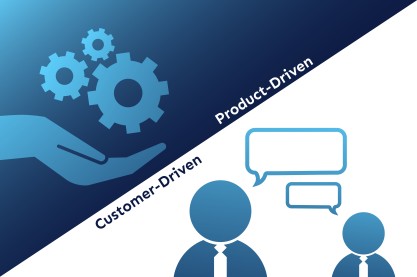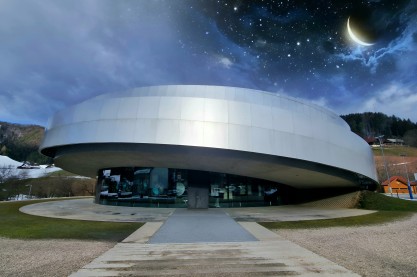Total Quality Manage...
18265 | 6 Apr 2023

In the pursuit of international standardization and enhanced collaboration among global manufacturers, a unified standard for Quality Management Systems (QMS) has emerged. This standard aims to replace all national standards in the field, creating a network of interconnected guidelines. These standards have not only streamlined quality management within organizations but have also fostered smoother national and international trade relations.
The relationship between Quality Management Systems (QMS) and ISO 9000 standards is integral to how organizations approach quality control, assurance, and improvement. ISO 9000 standards serve as a foundational framework for QMS, offering globally recognized best practices for establishing, implementing, and continually enhancing quality systems. Organizations adopting ISO 9000-aligned QMS benefit from a structured approach that ensures consistency and efficiency in meeting customer requirements while also emphasizing risk management, legal compliance, and a focus on continuous improvement. This alignment with industry standards enhances an organization's credibility, fosters international trade relations, and promotes adaptability in the ever-changing business landscape, ultimately leading to improved product or service quality and customer satisfaction.
ISO 9000 standards are primarily organizational and managerial guidelines, distinct from technical standards or specifications. They focus on quality management systems within organizations, rather than product standards. Across the European Union, nations have aligned their national standards with ISO 9000 standards. Slovenia has embraced ISO 9000 standards through SIST ISO 9000, with "SIST" representing the organization responsible for adapting Slovenian standards for international use.
ISO 9001 standards have evolved over the years to enhance quality management systems:
The ISO 9000 family comprises several key standards:
Quality assessments, often associated with ISO 9001, evaluate the extent to which a quality management system meets requirements. These assessments are conducted internally by the organization, on behalf of the organization by its customers, or by external, independent organizations authorized to certify compliance with ISO 9001 requirements.
Leadership plays a pivotal role in ensuring the success of a quality management system, with responsibilities that include:
To achieve continuous improvement within ISO 9001, top management should:
A notable addition in the latest version of ISO 9001 is the emphasis on risk management. Organizations are now required to plan and implement actions to address risks and opportunities. Managing both risks and opportunities paves the way for improved performance, better outcomes, and the prevention of negative impacts.
Several quality management approaches can be considered under ISO 9001, including Business Process Reengineering (BPR), Lean Production, Continuous Improvement Processes (CIP), Kaizen, Total Quality Management (TQM), Total Productive Maintenance (TPM), European Foundation for Quality Management (EFQM) for business excellence, Just-In-Time (JIT), and more. These approaches offer organizations various strategies for achieving and maintaining high-quality standards within the framework of ISO 9001.
Implementing ISO 9000 standards is a crucial step for organizations aiming to enhance their quality management systems (QMS). ISO 9000 standards provide a framework for establishing, maintaining, and continuously improving quality within an organization. In this article, we will break down the steps involved in introducing ISO 9000 standards into your organization's processes and explain the benefits of an effective Quality Management System (QMS).
Step 1: Leadership Commitment
The commitment of the leadership team is vital when implementing ISO 9000 standards. This commitment involves supporting the quality policy, communicating with employees, actively participating in the project, and more. Effective leadership sets the tone for the entire organization's dedication to quality.
Step 2: Establish an Implementation Team
Forming a cross-functional implementation team is essential. It should include employees from various departments and involve educating them about QMS concepts. This team will be responsible for driving the implementation process forward.
Step 3: Initiate ISO 9000 Promotion
Promote ISO 9000 standards within your organization by effectively communicating with employees. Highlight the advantages of the standard and work on gaining employee support for the initiative.
Step 4: Training and Education
Provide training and education on ISO 9000 concepts to your employees. This includes instructing them on how to write quality manuals, procedures, and conducting audits.
Step 5: Current State Analysis
Analyze your organization's current state, primarily identifying existing processes, documents, and comparing any existing QMS with ISO 9001 requirements.
Step 6: Document the Implementation Plan
Document the activities you plan to execute for ISO 9000 implementation. Define how your QMS will align with ISO 9001 requirements, including timelines, responsibilities, and required resources.
Step 7: QMS Documentation Design
Design your QMS documentation, which should include a documented quality policy, quality manual, documented procedures, and records as required by the standard.
Step 8: Implementation
Execute the implementation process, ensuring that progress is measured to guarantee the effectiveness and compliance of your QMS with ISO 9001 requirements.
Step 9: Internal Audit
Conduct an internal audit to verify whether your QMS complies with ISO 9001 requirements and is effectively implemented and maintained.
Step 10: Management Review
Hold a management review to ensure the suitability, adequacy, and effectiveness of your QMS. Identify opportunities for improvement, including changes to quality policies and objectives.
Step 11: Certification Audit
Prepare for the certification and registration audit by selecting a certification body, submitting an application, conducting a documentation review, undergoing a certification audit, and eventually receiving certification.
Step 12: Continuous Improvement
Emphasize continuous improvement as a fundamental aspect of ISO 9000 standards. Continuously monitor and enhance your QMS to ensure it adapts to changing circumstances and maintains high-quality standards.
An effective Quality Management System (QMS) offers numerous benefits to organizations:
Implementing ISO standards can be motivated by both internal and external factors:
Internal Motives:
External Motives:
ISO 9001:2009 offers various internal and external advantages, including improved productivity, reduced quality defects, clearer responsibilities, and increased customer satisfaction. It fosters a culture of continuous improvement, resulting in cost reductions, increased profits, and customer retention.
ISO 9000 standards have evolved into a crucial framework for organizations worldwide, serving as a catalyst for quality management, continuous improvement, and effective risk management. The cornerstone of their successful implementation lies in unwavering leadership commitment and an unwavering dedication to continual enhancement, all aimed at maintaining ISO 9001-compliant quality management systems. These guiding principles empower organizations to strive for excellence, consistently delivering products and services that align with and exceed customer expectations. ISO 9000 standards, in turn, furnish organizations with a structured approach to quality management, ensuring steadfast consistency, operational efficiency, and heightened customer satisfaction. Embracing the steps elucidated in this article and recognizing the advantages of a proficient Quality Management System enables organizations to seamlessly integrate ISO 9000 standards into their operations, positioning themselves to thrive in today's fiercely competitive business landscape.
What are your thoughts on the subject above? Feel free to post a comment or start a discussion.
TAGS: ISO 9000 Benefits, Quality Standards, ISO Implementation Process, ISO 9000 Audits, ISO 9000 Training, ISO 9004 Guidelines, ISO 19011 Auditing, Quality Management Principles, ISO 9000 Evolution, ISO 9001:2000, ISO 9001:2008, ISO 9001:2015 Changes, ISO 14000 Standards, Environmental Management, ISO 14001:2015, ISO 14000 Implementation, ISO and Business Excellence, Quality Management Strategies, ISO 9000 and Productivity, ISO 9000 and Customer Relations, ISO Certification Process, ISO 9000 and Competitiveness, ISO Requirements, ISO Compliance Benefits, ISO Auditing Process.


Leave A Comment